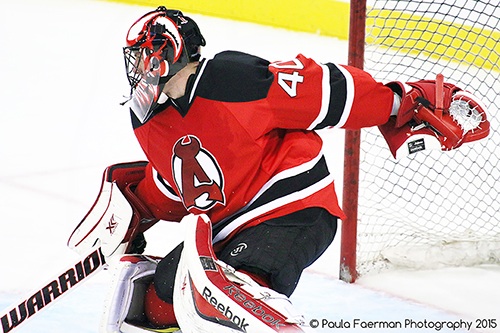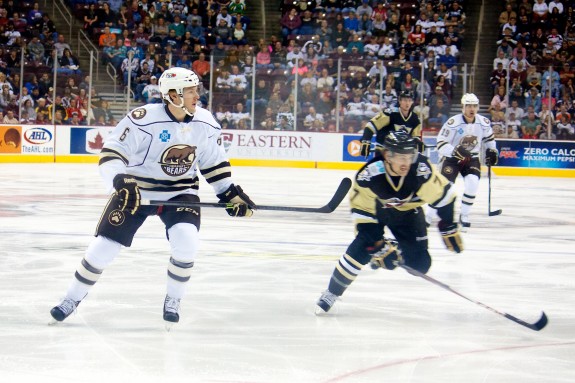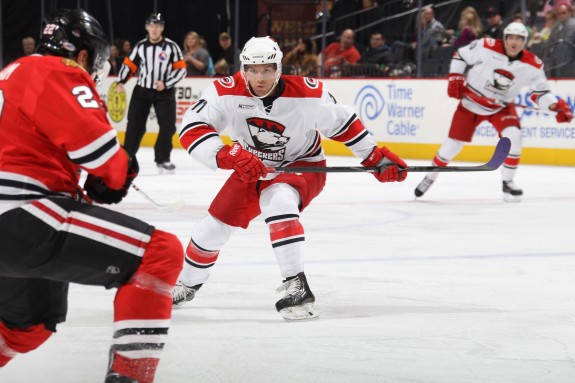Everything old is new again in the American Hockey League. A league which has seen more recent shakeup than the inside of a NutriBullet. For the first time since the conclusion of the 2010-11 season, the AHL Board of Governors has approved a new divisional alignment for the 2015-16 campaign. It is a setup much like the NHL format.
All that’s left to sort out is how many games the AHL schedule will entail and how the Calder Cup playoff format takes shape. On the latter front, one would believe the league will defer to the NHL model. When it comes to the former, there will be a dogged fight between independent owners, of which the Hershey Bears and Syracuse Crunch come to mind, who will make the case to keep the 76-game slate (already whittled down in recent years from 80), while the West Coast clubs argue for somewhere closer to 60 contests.
NEWS: The #AHL’s Board of Governors has approved a new division alignment for the 2015-16 season → http://t.co/lWZT899fNn.
— American Hockey League (@TheAHL) May 12, 2015
The new alignment consists of a Western and Eastern Conference, each composed of two divisions, one with eight clubs and the other having seven. In the West, there’s the Pacific and Central. In the East, there’s the Atlantic and North (wait you mean no crazy names like the Metropolitan?). The shift has six affiliates moving to the Western Conference. The Lake Erie Monsters and San Antonio Rampage remain in the West but with different parent clubs and Calgary’s affiliate stays in the West but in Stockton instead of Adirondack. Conversely in the East, five affiliates are shifting into the Conference. Portland, Springfield and St. John’s all stay in the East but with new parent clubs. The only shifting teams to stay in the league and keep their respective parent club affiliations, are all moving to the East, Rochester Americans, Toronto Marlies and Utica Comets.

Aside from the uncharted territory of a Pacific Division, longtime fans and followers of the AHL were buzzing about the reformation of the “Empire Division.” All five AHL squads (Albany, Binghamton, Rochester, Syracuse and Utica) based in New York State, will play in the seven-team North Division, along with Toronto and St. John’s. If you’ll recall, during the 1996-97 season, the Empire State Division housed the Rochester Americans, Adirondack Red Wings, Albany River Rats, Syracuse Crunch and Binghamton Rangers. Fast forward and you have the Amerks, Crunch, Albany Devils, Binghamton Senators and Utica Comets. Couple those clubs with Toronto and a Montreal affiliated St. John’s squad, which was essentially the Hamilton Bulldogs and you’ve got potential for some intense rivalries. Plus, Albany and Syracuse have been in the Northeast Division in the past couple of years and have also been in the same division as Binghamton, in recent vintage.

Although some Upstate New York fans may miss seeing the top affiliates of the New York Rangers and New York Islanders on a regular basis, it makes sense for Hartford and Bridgeport to shift (although one could make the case for putting St. John’s in the Atlantic but I digress). It sets up nicely for the “New England – Penn League,” consisting of the Wolf Pack and Sound Tigers making up for the westward defection of Worcester and Manchester, along with the Springfield Falcons, Providence Bruins, Portland Pirates and the Pennsylvania hat-trick of the Lehigh Valley Phantoms, Wilkes-Barre/Scranton Penguins and the Bears. There’s already quite a few solid rivalries sewn into this division.

Moving to the West, the Central Division consists of the Charlotte Checkers, Chicago Wolves, Grand Rapids Griffins, Iowa Wild, a Columbus Blue Jackets affiliated Lake Erie Monsters club, a reincarnated Winnipeg Jets version of the Manitoba Moose, the Milwaukee Admirals are now the lone Ads in the league and rounding out the division, the Rockford IceHogs.

Finally the newly minted Pacific Division consists of teams from California and Texas. Virtually mirroring the North, the Pacific houses the Bakersfield Condors, Ontario Reign, San Diego Gulls, Stockton Heat, San Jose Barracuda, Rampage and Texas Stars.

I’m most intrigued by how weighted the schedules will be. I’d expect there to be a lot of heavy intra-division play.